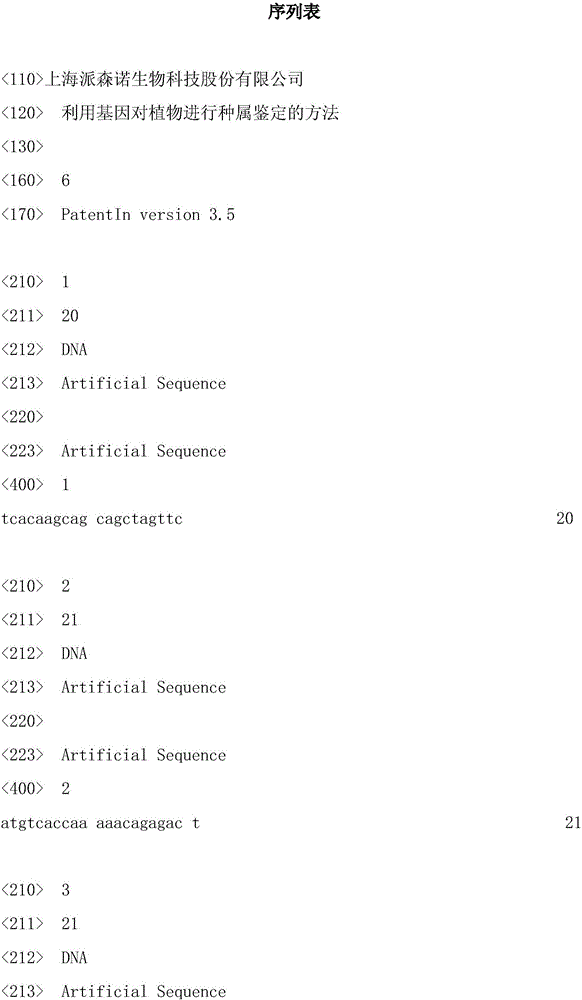Method of using genes for species identification of plants
A gene pairing and plant technology, applied in the field of genetic engineering, can solve problems such as easy confusion, achieve the effect of improving accuracy and shortening identification time
- Summary
- Abstract
- Description
- Claims
- Application Information
AI Technical Summary
Problems solved by technology
Method used
Image
Examples
Embodiment
[0027] This embodiment relates to a method for identifying the species of plants using genes; specifically, it includes the following steps:
[0028] 1. Genome Extraction
[0029] 1. Weigh 200 mg of fresh plant tissue (if freeze-dried tissue is used, the amount of tissue should be halved). Cut into small pieces and put them in a mortar; add liquid nitrogen to freeze the tissue completely, then quickly and vigorously grind to powder. Liquid nitrogen should be added intermittently during grinding to prevent the tissue from melting. After the grinding is complete, put the mortar in a 56°C water bath until the sample powder just begins to melt;
[0030] 2. Add 350 μl PBS and 0.9 μl RNaseA stock solution, and grind vigorously for 30 seconds;
[0031] 3. Transfer 350 μl of the ground homogenate to a 2ml centrifuge tube, if the volume of the homogenate is less than 350 μl, add PBS to 350 μl;
[0032] 4. Add 150 μl buffer C-L and 20 μl proteinase K; immediately vortex for 1 min to ...
PUM
 Login to View More
Login to View More Abstract
Description
Claims
Application Information
 Login to View More
Login to View More - R&D Engineer
- R&D Manager
- IP Professional
- Industry Leading Data Capabilities
- Powerful AI technology
- Patent DNA Extraction
Browse by: Latest US Patents, China's latest patents, Technical Efficacy Thesaurus, Application Domain, Technology Topic, Popular Technical Reports.
© 2024 PatSnap. All rights reserved.Legal|Privacy policy|Modern Slavery Act Transparency Statement|Sitemap|About US| Contact US: help@patsnap.com










